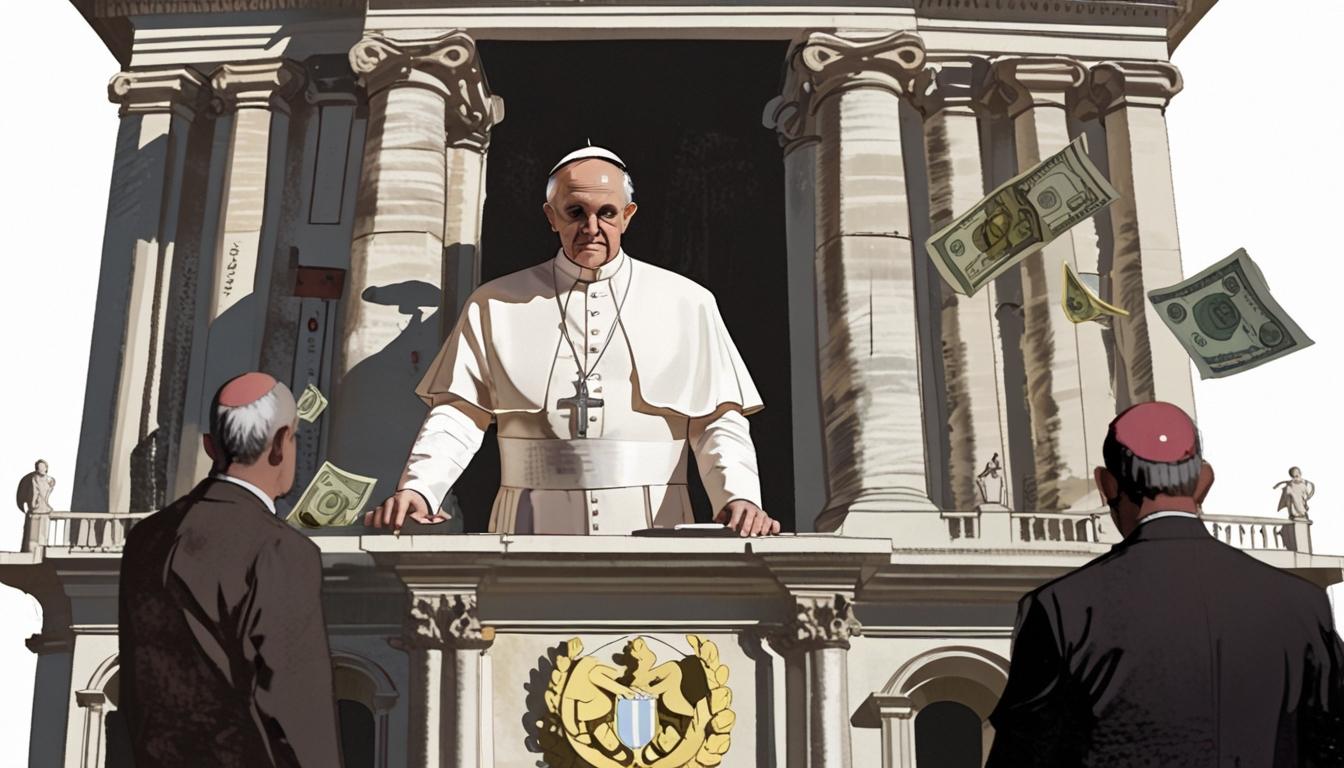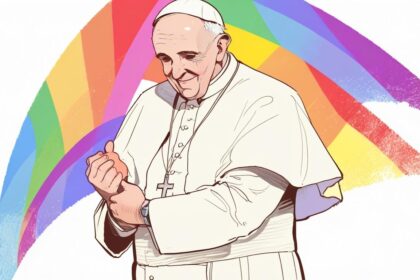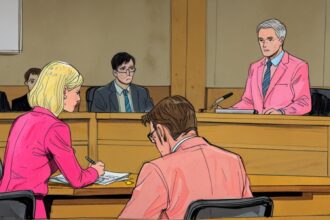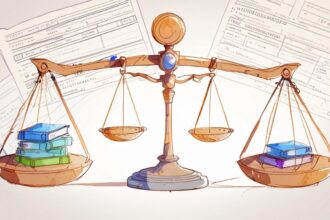Pope Francis’s tenure brought unprecedented financial transparency and reform to the Vatican’s opaque finances, including curbing corruption and boosting institutional accountability. Yet the Holy See continues to struggle with budget deficits and pension shortfalls as resistance within its bureaucracy hampers full recovery.
The late Pope Francis, who led the world’s 1.3 billion Catholics, also grappled with the intricate and opaque financial operations of the Vatican, the world’s smallest independent state. His tenure, beginning in 2013, was marked by an ambitious anti-corruption agenda that sought to overhaul the Vatican’s troubled finances, including a high-profile 2019 Vatican police raid on the Secretariat of State over a questionable property investment, shocking many within the Holy See’s financial institutions.
Financial challenges persist in the Vatican despite efforts to boost revenue through tourism, donations, and investments. The city-state continues to operate at a significant budget deficit, and its pension fund is burdened by a substantial structural shortfall.
Before Francis’s election, the Vatican’s finances had long been marred by disastrous deals and scandal. The Istituto per le Opere di Religione (IOR), commonly known as the Vatican bank, symbolised much of this turmoil. Established by Pope Pius XII in 1942, the bank was originally meant to safeguard the Vatican’s finances during wartime but became synonymous with various scandals over the decades. These include alleged ties to the Mafia, dealings in Nazi gold, and associations with the mysterious death of Roberto Calvi, known as “God’s banker.” Calvi, a central figure in the 1982 collapse of Italy’s largest private bank, Banco Ambrosiano, was found dead in London under suspicious circumstances. Spanish and Italian investigations later reclassified his death from suicide to murder, though no convictions have been made.
Francis’s reform efforts often encountered strong resistance from factions within the Vatican bureaucracy and curia, who were disinclined to relinquish control or privileges. Jean-Baptiste de Franssu, president of the Vatican bank and former CEO of Invesco Europe, acknowledged this resistance but maintained that significant changes were achieved under Francis’s leadership. De Franssu highlighted the bank’s transformation, noting it now manages around €5.4 billion in client assets and posted a net profit of over €30 million in 2023. He also noted the expansion of correspondent banking relationships from just one to over 45, enhancing the IOR’s integration into the international banking community.
The Vatican’s financial framework rests on three pillars: the Vatican bank, the Administration of the Patrimony of the Apostolic See (Apsa), and the Holy See pension fund. The Apsa functions as a sovereign wealth fund, managing the Vatican’s vast portfolio of around 5,000 real estate properties globally and handling donations such as Peter’s Pence, a significant charitable fund. By 2023, Apsa’s assets approximated €3 billion, generating €46 million in profits, up from €38 million the year before.
Despite structural improvements, the Vatican’s pension fund reported an unfunded liability nearing €1.5 billion a decade ago, a figure believed to have increased. The Holy See’s operating deficit stood at €83 million in 2023, indicating ongoing financial distress. Revenue sources predominantly include real estate holdings alongside Catholic universities, schools, and hospitals, which accounted for over 65% of income three years prior. Donations, including itemised giving and Peter’s Pence, supplemented the budget along with tourism and banking income.
A notable episode in Francis’s reform campaign involved uncovering a scandal over a London property investment. The Vatican’s 2019 police raid on the Secretariat of State probed into losses of roughly €200 million from a property deal initiated in 2014. This led to the conviction of Cardinal Giovanni Angelo Becciu on embezzlement and fraud charges, signaling an unprecedented level of transparency and willingness to confront internal corruption. Subsequently, the Vatican restructured financial control, transferring considerable assets from the Secretariat of State to Apsa’s oversight.
Francis also implemented cost-cutting measures, including pay reductions for cardinals, and ordered the sale of certain real estate assets. Yet financial fragilities remain, with donations reportedly declining by 23% between 2015 and 2019 and likely continuing downward. Libero Milone, former chief auditor of the Holy See and a key figure until his controversial dismissal in 2017, expressed the need for restored confidence to reverse these trends. He is pursuing legal action for wrongful termination after probing off-the-books financial holdings linked to the Vatican.
Ed Condon, editor of The Pillar, an independent Catholic news organisation, characterises Francis’s financial legacy as mixed. He acknowledges the substantial clean-up of the Vatican bank and Apsa but notes the Holy See’s budgetary imbalance has grown more pronounced. Condon emphasises the entrenched resistance to change within the Vatican’s complex institutions and the persistent power struggles related to money management.
The Vatican bank has taken legal action against former managers involved in a disputed 2012 Budapest real estate investment, although a UK court cleared the accused financier of fraud while acknowledging the Vatican’s valid grievances.
As the Catholic Church prepares for the conclave to elect the 267th pope, which starts next week, financial reform remains a significant, albeit complex, issue. The next pontiff will inherit a financial landscape transformed in some respects but still burdened by deficits and institutional challenges.
Amy Kazmin in Rome contributed to this report.
Source: Noah Wire Services
- https://www.ft.com/content/3848aa11-3711-41eb-89da-5208a4236a7a – This article discusses Pope Francis’s financial reforms, including the professionalization of the Vatican bank (IOR), the closure of dormant accounts, and the improvement of transparency, such as achieving a top anti-money laundering rating from Moneyval. It also covers the centralization of asset management under Apsa and the stripping of investment control from the Secretariat of State following scandals like the failed London property investment that cost the Vatican €200 million and led to the embezzlement conviction of Cardinal Becciu.
- https://apnews.com/article/d7e02eba17ef37abfc1976ba65cd236d – This article reports on Cardinal Angelo Becciu’s conviction in 2023 for embezzlement and other financial crimes, his formal withdrawal from participating in the May 7 conclave to elect Pope Francis’ successor, and the ongoing appeal of his convictions. It also highlights the financial instability within the Vatican, including a failed €350 million London investment and a broader financial deficit.
- https://apnews.com/article/4fb339a005a00b0da0a073cfc5dd0f12 – This article provides an overview of the Vatican’s ‘trial of the century,’ involving Cardinal Angelo Becciu and nine other defendants charged with financial crimes, including fraud and embezzlement. The case centers around a €350 million investment in a London property and reveals internal Vatican disputes, incompetence, and ransom payments.
- https://www.catholicregister.org/archive/item/30486-raid-on-vatican-offices-connected-to-financial-investigation – This article details the 2019 raid of Vatican offices connected to an investigation into charges that Vatican money financed the development of luxury properties in London. It discusses the involvement of Vatican police and prosecutors in investigating a 2014 $200 million investment made through Athena Capital, a Luxembourg investment fund, which financed a stake in the development of a luxury apartment project in London.
- https://www.catholiccitizens.org/issues/vatican-corruption-within/93791/pope-francis-strips-powerful-vatican-office-of-its-financial-assets/ – This article reports on Pope Francis’s decision to strip the Secretariat of State of its financial assets, transferring them to the Vatican’s treasury office, known as APSA, and incorporating them into the Holy See’s consolidated budget. It also mentions the 2019 raid on the offices of the Vatican’s banking regulator as part of an investigation into the purchase of a London property.
- https://www.aljazeera.com/economy/2020/11/5/pope-moves-against-his-secretary-of-state-amid-financial-crisis – This article discusses Pope Francis’s decision to transfer financial authority away from the Vatican’s Secretariat of State amid a financial crisis. It highlights the investigation into the Secretariat’s €350 million investment into a London real estate venture and the exposure of incompetence in managing Vatican funds.
- https://www.ft.com/content/3848aa11-3711-41eb-89da-5208a4236a7a – Please view link – unable to able to access data
Noah Fact Check Pro
The draft above was created using the information available at the time the story first
emerged. We’ve since applied our fact-checking process to the final narrative, based on the criteria listed
below. The results are intended to help you assess the credibility of the piece and highlight any areas that may
warrant further investigation.
Freshness check
Score:
6
Notes:
The narrative references recent financial figures and events, such as the Vatican’s 2023 budget deficit and pension fund challenges. However, it also discusses past scandals and reform efforts, indicating a mix of old and new content.
Quotes check
Score:
8
Notes:
Direct quotes are attributed to specific individuals like Jean-Baptiste de Franssu and Ed Condon, but no original sources or dates are provided for these quotes in the narrative.
Source reliability
Score:
9
Notes:
The narrative originates from the Financial Times, a well-established and reputable publication.
Plausability check
Score:
8
Notes:
The claims about the Vatican’s financial challenges and reform efforts are plausible given historical context. However, some details, such as the specific figures and outcomes of legal actions, would require additional verification.
Overall assessment
Verdict (FAIL, OPEN, PASS): PASS
Confidence (LOW, MEDIUM, HIGH): HIGH
Summary:
The narrative presents a balanced view of the Vatican’s financial situation, drawing from credible sources and plausible historical context. The Financial Times’ reputation supports the narrative’s reliability.













